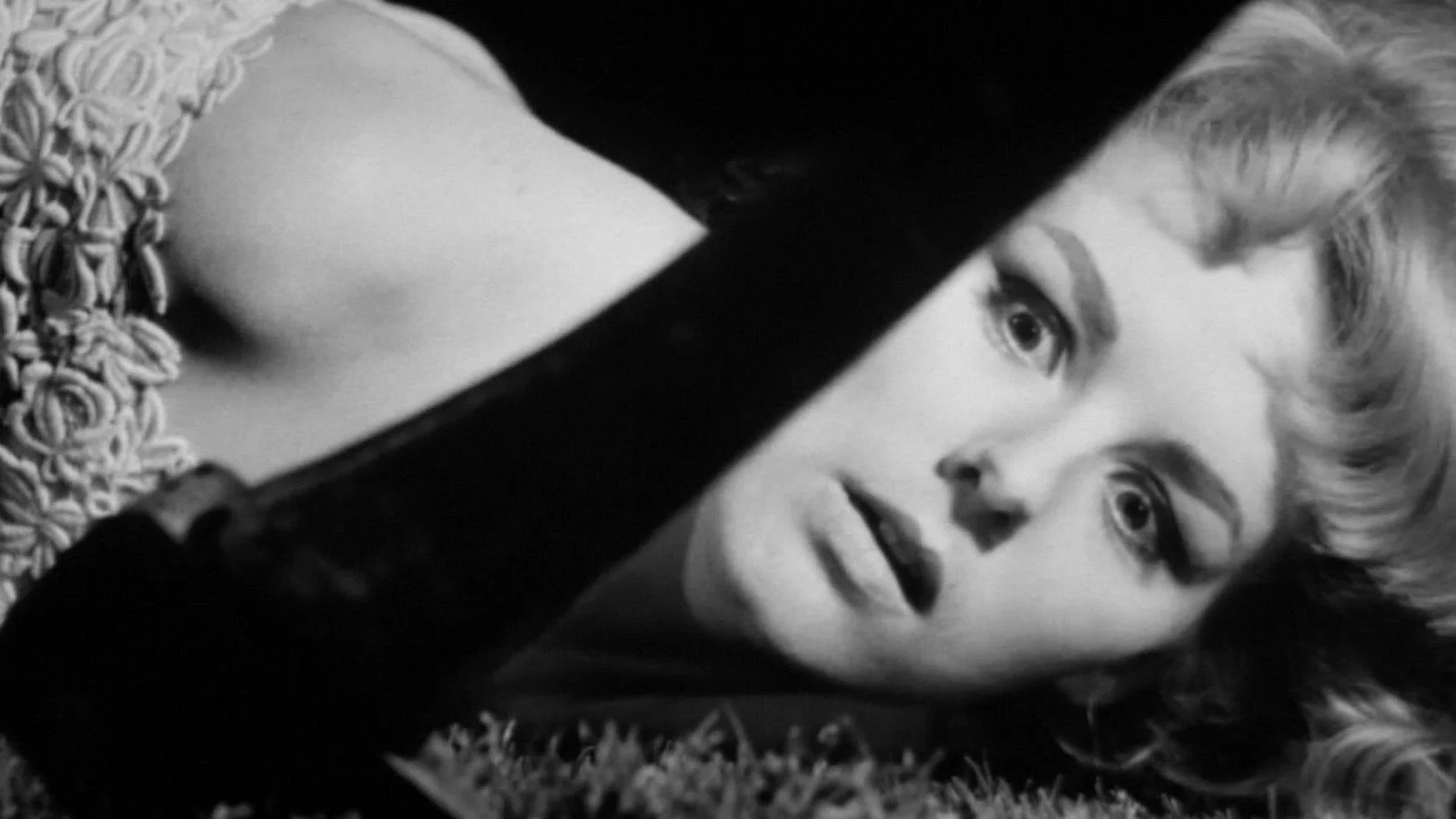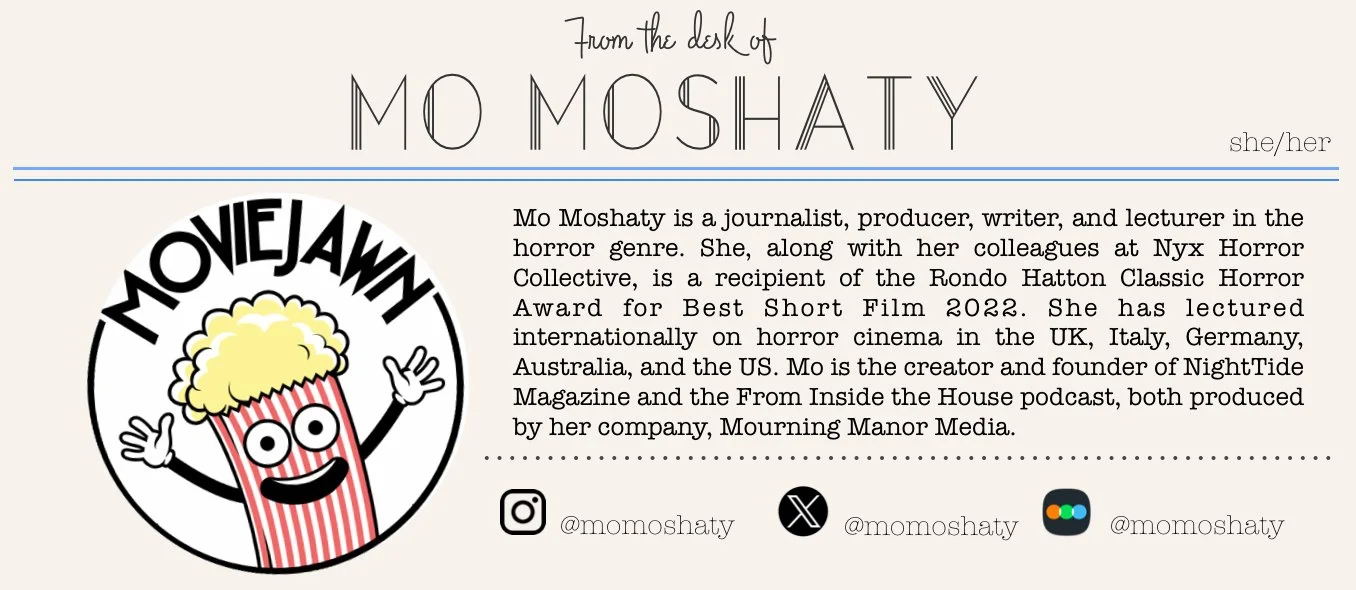Coppola Week: Horror at Haloran's - How Coppola's freshman feature DEMENTIA 13 developed his style
This week, in honor of the wide release of Megalopolis, MovieJawn is looking back at some of Francis Ford Coppola’s lesser-discussed work. No Godfathers, Conversations, or Apocalypses right Now. Read the other articles here.
by Mo Moshaty, Staff Writer
The first foray out as a filmmaker can be a make or break. Francis Ford Coppola’s Dementia 13 (1963) is a disjointed gothic horror exploring psychological horror and paranoia. Set in a chilling and aging Irish Castle, the film dives into the trope of the "hysterical woman.” Revolving around the Haloran family, who are haunted by the tragic drowning of a young daughter named Kathleen, old rivalries resurface, tensions mount, and the body count rises as the family gathers at the castle for the annual remembrance ceremony. Louise Haloran, who married into the family, beautifully exemplifies this trope as she schemes her way to the good life by fighting for her late husband John’s inheritance after he suddenly dies. In a desperate grab to gain control over the male dominated Haloran house and its finances, Louise manipulates the family’ emotions and fragile mental state by hiding John’s body, but when her strategy grows more and more erratic and unhinged, her house of cards comes tumbling down.
I begin here because it’s best to lead with solid attributes, but this first foray is messy, overplayed and full of holes.
The use of the “hysterical woman” trope has rich history and roots in Gothic literature and Coppola has certainly taken inspiration here from the clichéd pages of stories like The Woman in White by Wilkie Collins (1859), where two sisters become embroiled in sinister secrets, deceit and psychological manipulation at the hands of men; Rebecca by Daphne du Maurier (1938), exploring grief and obsession of the departed; and The Haunting of Hill House by Shirley Jackson (1959), wherein Eleanor Vance becomes drawn the aura of deception and obsession of Hill House no matter how “crazy” she seems to others.
Gothic female characters are usually portrayed as psychologically unstable, malleable or emotionally disturbed, often driven to extremes by madness beyond their control. Louise is handcrafted from the “hysteria” playbook of a women being a helpless victim of her emotions leading to irrationality and deviance, and this struggle for her to maintain the delicate balance of control and its loss leads to her horrible watery fate. It’s a trope that has been beaten to death since the 20s and here with Dementia 13, we see it shaking out its last gasps, albeit not the last the “thriller/horror” genre. While Dementia 13 introduces intriguing characters like Louise, most lack any clear motivation or depth. We know Louise is money-hungry, but why? Is it because she must get something out of having to deal with an oaf like John? Who knows. Her internal conflict or emotional nuances don’t go any further beyond that.
What’s interesting about this film is, at the thirty-minute mark, you’re not sure which genre you’re watching. Is it a whodunnit? A supernatural thriller? A money-grab heist? We start strong with the Haloran’s obsession with Kathleen’s death, and it’s a shame that we don’t delve into how each family member is handling it–and within that, rounding out suspicions and motivations for killing Kathleen. It muddies itself and then has to reverse engineer to redeem it with a rushed last half. The first half of the film unfolds slowly, creating a backstory and air of mystery, but the abruptness of the final reveal of the killing of Kathleen coming from inside the family with a disturbing ritual, pulls the audience out wondering why they spent so much time just to have it explained away by a wild (and I do mean wild) ending.
The film also relies heavily on its location and atmosphere, pulling long shadow and scenic shots and a pulsing score, which are all lovely but do a lot of the heavy lifting in place of a solid plot. It often feels fragmented, with some scenes going on longer than necessary or seemingly random to create atmosphere. The hopeful combination of all the genres Coppola adored like psychological thrillers, murder mysteries, and Gothic horror don’t connect to make the story whole enough.
A lesson Coppola soon took to heart as he headed into his later films.
The Godfather (1972) has a tightly woven narrative that masterfully balances multiple storylines such as the exploration of power, loyalty and morality and Coppola controls the film's pacing with exactitude, allowing tension to build steadily while providing room for character and story development. This pacing contrasts sharply with the disjointed nature of Dementia 13.
The Conversation (1974)–starring Gene Hackman at his finest and centered on a surveillance expert’s moral dilemma–explores its themes, such as privacy and surveillance, in a thought-provoking and anxiety inducing way, unlike the clichéd elements of Dementia 13. The story unfolds with a sense of realism and depth, avoiding tropes and delivering a tighter and intriguing narrative.
While Dementia 13 wavers between various horror subgenres, Apocalypse Now (1979) maintains a clear thematic focus on the horrors of war and the darkness within the human soul. Keeping this focus consistent and full of discomfort helps enhance the story and create deeply nuanced characters like Captain Willard and Colonel Kurtz. We get to delve into their motivations and deepest fears, providing more character information for the audience to attach to.
Dementia 13, produced in 1963 under the sponsorship of Roger Corman, was Coppola’s first foray into showing his ability to create a gripping narrative on a modest budget. The movie’s themes of madness, grief, and the haunting influence of the past hinted at the deep psychological and emotional narratives that would become hallmarks of his filmography.
Known for his relentless pursuit of excellence, Francis Ford Coppola’s method is one of immersion. The intersection of atmosphere, character and theme are woven to create a well-blended experience for his audience. In his later works, Coppola refined this approach to perfection – taking notes from what didn’t work in Dementia 13 to go on and create films with characters rich in emotional resonance and thematic depth. Showing the complexity of the human struggle and humanity at it’s darkest has cemented him as one the most transformative auteurs in film history.
From the gothic and opaque confines of Dementia 13 to landing on every watchlist, Coppola has certainly learned from the past to construct worlds that haunt, challenge and inspire.





